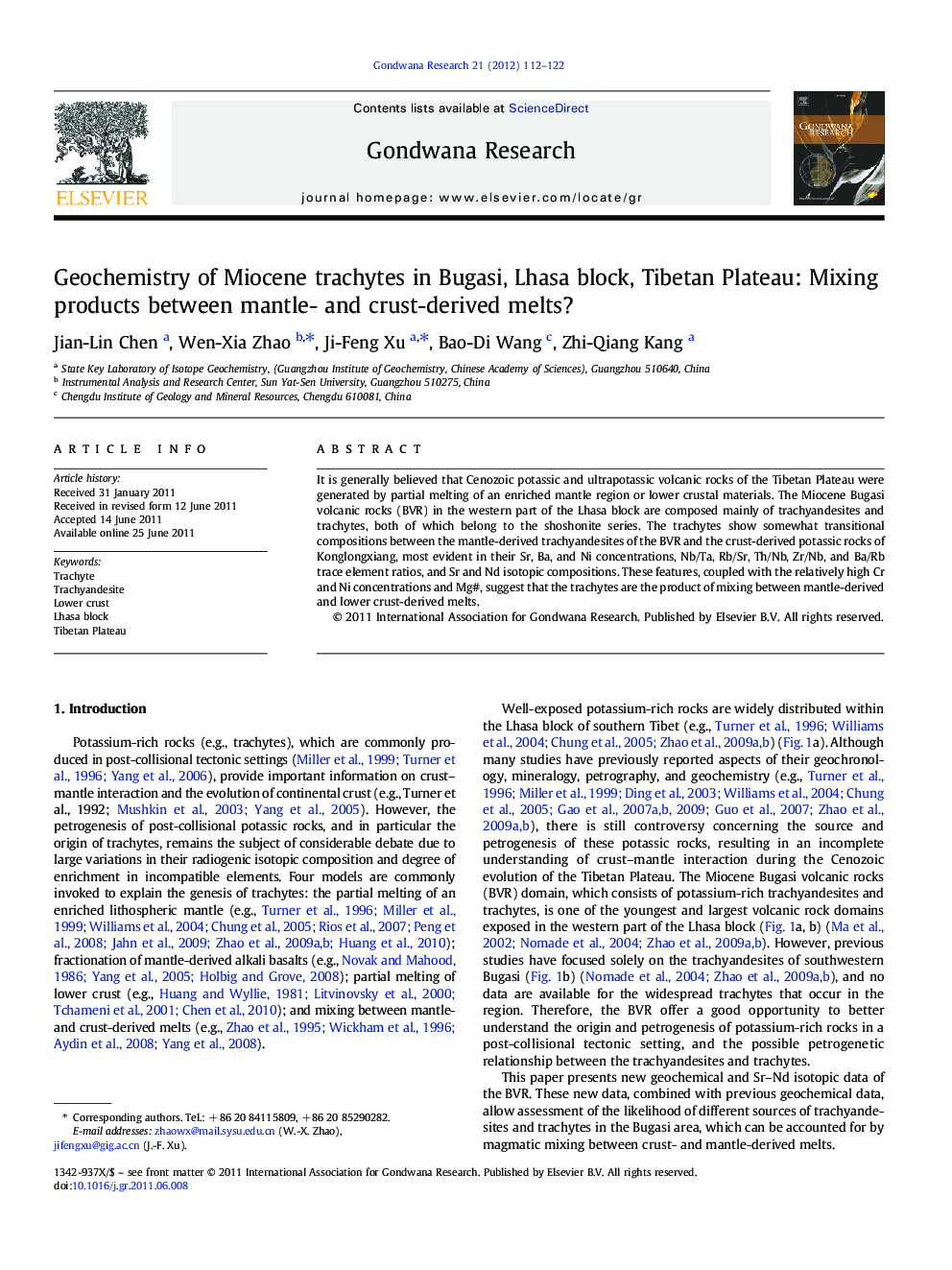| کد مقاله | کد نشریه | سال انتشار | مقاله انگلیسی | نسخه تمام متن |
|---|---|---|---|---|
| 4727386 | 1356373 | 2012 | 11 صفحه PDF | دانلود رایگان |

It is generally believed that Cenozoic potassic and ultrapotassic volcanic rocks of the Tibetan Plateau were generated by partial melting of an enriched mantle region or lower crustal materials. The Miocene Bugasi volcanic rocks (BVR) in the western part of the Lhasa block are composed mainly of trachyandesites and trachytes, both of which belong to the shoshonite series. The trachytes show somewhat transitional compositions between the mantle-derived trachyandesites of the BVR and the crust-derived potassic rocks of Konglongxiang, most evident in their Sr, Ba, and Ni concentrations, Nb/Ta, Rb/Sr, Th/Nb, Zr/Nb, and Ba/Rb trace element ratios, and Sr and Nd isotopic compositions. These features, coupled with the relatively high Cr and Ni concentrations and Mg#, suggest that the trachytes are the product of mixing between mantle-derived and lower crust-derived melts.
Figure optionsDownload as PowerPoint slideHighlights
► Potassic volcanic rocks in Tibet were derived from various sources.
► The trachytes of the Miocene Bugasi Volcanic Rocks (BVR) are genetically different from other potassic rocks in Tibet.
► The BVR trachytes are products of mixing between mantle- and crust-derived melt.
Journal: Gondwana Research - Volume 21, Issue 1, January 2012, Pages 112–122